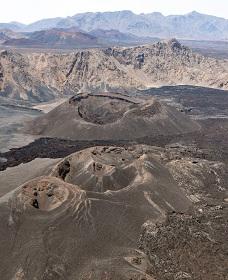Using AI to control energy for indoor agriculture
30 September 2024
Published online 4 January 2011

A team of US geologists have developed a new and improved seismic model to detect underground nuclear explosions in the Middle East.
The model covers a politically and seismically volatile region of Eurasia with known or suspected nuclear programmes including Pakistan, Afghanistan, Iraq and Iran.
"Monitoring explosions and especially nuclear tests through the detection of seismic waves is [well-known and] used globally," said Ata Elias, a geologist at the American University in Beirut (AUB) who is not involved in the model.
The improved model, expected to be up and running by July 2010, will not require building up a new network of sensors throughout the region. It builds upon a three-dimensional model developed by scientists at Harvard University. Geologists from the University of Rhode Island (URI) and Princeton University in New Jersey collaborated with Lawrence Livermore National Laboratory, California, to improve the model to more accurately register and detect the location and depth of seismic activity and interpret the seismic waves to determine if the source is natural or man-made.
"Shallow events normally [have a] large amplitude. This amplitude decreases as the event depth increases," explained Brian Savage, a geoscientist at URI. "For identification purposes, we assume non-natural events are primarily shallow."
According to Elias, analyzing seismic waves can tell a lot about the source of the seismic signal, such as whether it originates from a volcanic eruption, earthquake or a man-made explosion.
The new improvements centre on long-period seismic waves rather than short period ones. "These waves can travel longer distances without losing much of their energy," said Elias.
The geologists used records of seismic events in Eurasia that occurred between 1990 and 2007 to refine the model in place today. These seismograms were then reanalyzed through their new model. The team then compares real seismograms with synthetic ones generated from the current model. The difference is measured and is used to efficiently identify and remove deficiencies.
"This process after numerous iterations using high performance computers will be used to better locate and identify events in Eurasia," added Savage.
The quality of the model is highly dependent on the availability of high-quality data and is adversely affected by noisy data. "Noise can be due to a number of sources including atmospheric storms on the coasts, instrumental noise, and man-made noise if the instrument is located near a metropolitan area," explains Savage. The researchers are trying to develop new methods to screen out irrelevant data.
The same models can be used to generate seismic hazards maps in Eurasia. "This method can easily be applied to plate tectonic problems including the imaging of volcanoes [and] how and where earthquakes rupture," said Savage.
doi:10.1038/nmiddleeast.2011.240
Stay connected: